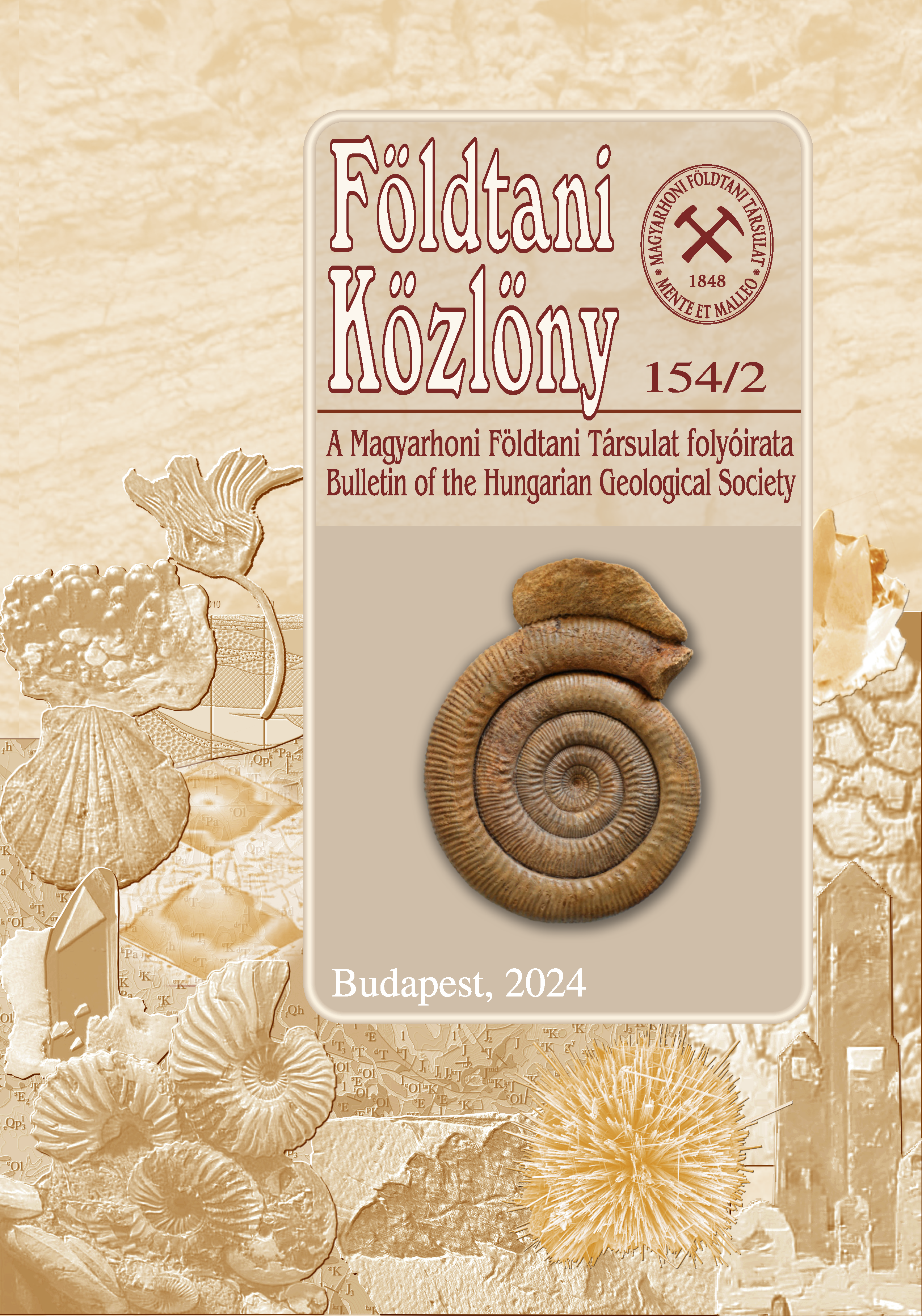Application of studies on fluid inclusion planes and fracture systems in the reconstruction of the fracturing history of granitoid rocks III
Results of studies in drillcores from the radioactive waste depository site at Bátaapáti (Üveghuta)
Abstract
This study concerns investigations into oriented drill cores from granitoid rocks (i.e. Mórágy Granite Formation)
from the Bátaapáti (Üveghuta) Nuclear Waste Depository Site. Based on fluid inclusion studies in fluid inclusion planes
from rock-forming quartz and in hydrothermal veins, five fluid-flow events were distinguished. Their relative ages and
main orientations were also determinated.
1st event: This event is related to the formation of the Variscan Mórágy Granite and can be traced in the primary fluid
inclusions of pegmatoids. The inclusions — which entrap this type of fluid —, have a homogenization temperature
between 260–290 °C and a salinity of 5–6 wt% NaCl equivalent. With respect to pressure correction, a formation
temperature of 500–550 °C can be assumed for the pegmatoids. The fluid-flow took place in NNE–SSW-trending
fractures.
2nd event: This took place along NE–SW and NW–SE-trending fractures. The fluid can be interpreted in the NaClCaCl2-H2O system with an average salinity of 22 wt% CaCl2 equivalent. Homogenization temperatures of the fluid
inclusions vary between 175–255 °C. This fluid may be related to either a metamorphic process or it may have a deep
basinal origin.
3rd event: In this event quartz and calcite veins were the products of a regional hydrothermal event, probably (Late)
Cretaceous in age. Fluid-migration took place both in NE–SW and NW–SE-trending fracture systems. Primary fluid
inclusions of the vein-filling quartz have homogenization temperatures between 100–200 °C and a salinity of 8–14 wt%
NaCl equivalent. Fluid inclusions in vein-filling calcite have a wide range of homogenization temperatures (i.e. between
100–250 °C), while salinities vary between 0,2–5 wt% NaCl equivalent.
4th event: This took place along — presumably — reactivated NW–SE trending fractures. The event, certainly
younger than Cretaceous volcanism, is presumably Early Palaeogene in age. The fluid can be interpreted in the NaClCaCl2-H2O system, characterized by an average salinity of 19 wt% CaCl2 equivalent. The inclusions have moderate
(60–120 °C) homogenization temperatures.
5th event: In this event a low-temperature fluid-circulation can be assumed and it is characterized by meteoric
solutions. A Late Miocene – Pliocene uplift may have triggered the reopening of fractures and these served as channels
for the migrating fluids.
Our investigations also indicated that the orientation of open micro- and macrofracture-systems show great
similarities.











